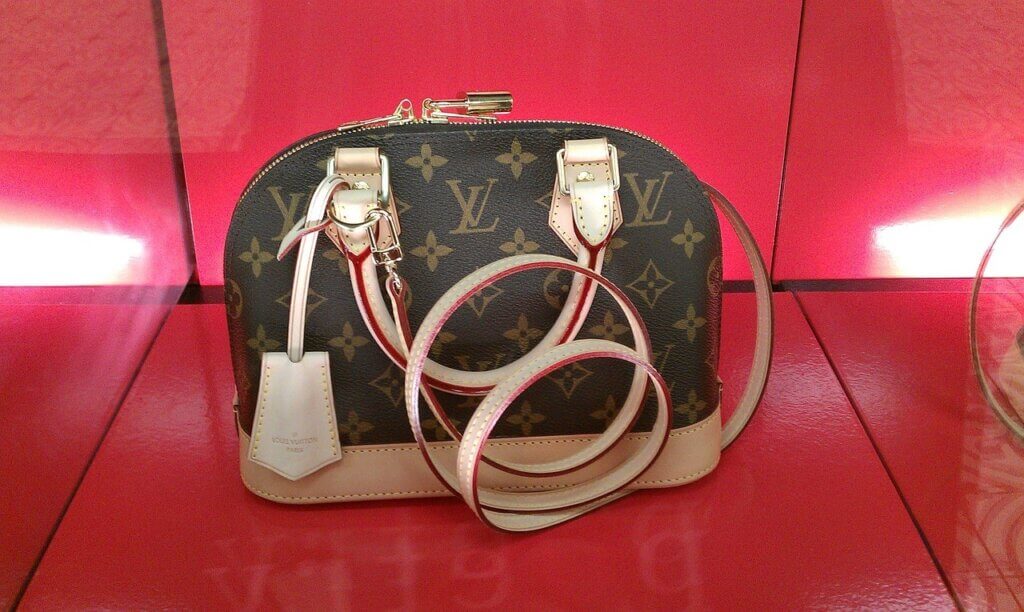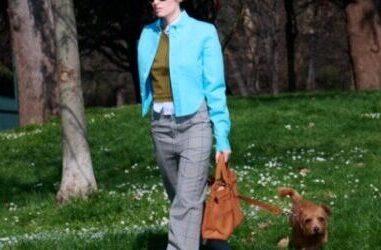Chinese shoppers will account for 40% of all luxury consumers by 2030
China’s richest people lean hard on quiet luxury, using stealth wealth as a weapon and mocking flashy, label-chasing luxury consumers. Firstly, people respect silk clothing. Then they respect the man. For generations it has been the popular saying in China – 先敬罗衣后敬人. It translates into a simple lesson for anyone who wants to be rich, or at least look the part.
What looking rich means to the Chinese has evolved over the years, but one thing is consistent: they spare no expense. Chinese shoppers will make up 40 percent of all luxury consumers by 2030, despite recent turbulence, according to Bain & Co’s research. Fashion houses from Burberry to Dior are also redoubling their efforts to make money.
But the face of China’s rich is changing. Gone are the flashy logos you can see from a mile away. A world away from America, the laws of the popular HBO series “Succession” also apply. The aesthetic of old money is in, the fashion for new money is tough, and if you want to be taken seriously, play the game.
The rules are simple. No top to toe Gucci. No loud colors, no Louis Vuitton print. The logic is that you wouldn’t wear something like you would see in “Crazy Rich Asians”, or what the Americanized Asians are adorned with on Netflix’s “Bling Empire”. And, according to Tom Wambsgan from “Succession”, only small, unassuming bags, because carrying a “ridiculously spacious” bag is out of the question.
Decoding the “Lao” style
To understand style and money in China, there are three terms you need to be familiar with: laoqianfeng, xinqianfeng and tuhao.
For starters, what flavor of rich you are in China is encoded into your person, from the clothes you wear, to the way your hair and skin look. When trying to create your image in the style of laoqianfeng – similar to what the West calls the aesthetics of old money – you need to appear well-nourished and composed, but natural and discreet enough to look like you have done absolutely nothing to achieve easy grace. And for xinqianfeng, or the aesthetics of new money, you leave it to your clothes to announce that you have reached a certain level of wealth, with as much flash and glitter as possible.
The term ‘Laoqian’ in China also refers to a group of people whose wealth has been accumulated over several generations. Imagine the lineage of real estate moguls and political power players, fuerdai educated at Ivy League schools, flying home for the summer to their lush homes in the inner rings of the Chinese capital, near the core of Beijing’s beating heart.
Xinqian, meanwhile, often refers to the wave of new millionaires who fought for their wealth after the communist revolution. Their parents may have come from the villages or brought out a middle class living in the country’s smaller, less well-known cities. But there is a new generation that is now coming into its own, collecting yuan in buckets. Some of their members are flashy tech and gaming millionaires who live in Shanghai and Guangzhou’s glitziest apartments. Others are glossy social media influencers who make millions on the internet.
And then there’s the tuhao, a term that loosely translates to “crazy rich,” local money men with awesome clothes, revving their red sports cars as they fly past people rolling up in modest sedan cars.
Noisy luxury is out, and here’s why
There are several reasons why noisy luxury is fading in China. Similar to the US and Europe – the ‘quiet luxury’ aesthetic has emerged as a reaction to the economic climate. With the economy slowing down and the country facing a 20% youth unemployment rate, it’s not good for the rich to splash their wealth right now.
At the same time, the economic downturn is putting pressure on younger, ambitious shoppers who have helped create a boom in luxury sales in China in recent years. These shoppers, who were flush with cash during the pandemic, became key buyers of luxury goods. And since many were making their first luxury purchases, they wanted to be vocal about it so flashy logos reigned.
But as their surplus cash has been depleted, the ‘logo hunter’, increasingly takes a back seat, leaving older, wealthier customers to pursue luxury spending. And this crowd – no longer luxury novices – increasingly prefer less flashy logos.
Public wealth is no longer accepted in China
Make no mistake: The rise in interest in quiet luxury doesn’t just stem from a modern, Western-inspired impulse to look like old-money Americans. It is social capital, but it is also the product of a particular moment in China, a confluence of political and social factors triggered by Chinese leader Xi Jinping’s quest for ‘shared prosperity’.
China has long had an uneasy relationship with the pursuit of luxury goods and an affluent lifestyle. The government has spent over a decade discouraging ostentatious displays of prosperity. Already in 2011, the authorities started banning signs with terms like ‘luxury’ and ‘high-class’ in Beijing. A year later, China banned officials from accepting expensive gifts or using public funds to host extravagant dinners.
This extended to government oversight of social media. In 2021, China’s version of TikTok, Douyin, said it deleted thousands of accounts and videos involving excessive displays of wealth, also known in Chinese as “xuanfu”. The South China Morning Post reported that some of these videos involved users showing off exorbitant amounts of cash and luxury items such as watches and keys to flashy cars.
This push for a more austere way of life even inspired some companies to find new ways to stay on the straight and narrow and avoid incurring the wrath of the Chinese authorities. Chinese financial firms, for example, now instruct their employees to refrain from wearing branded clothes or carrying luxury bags to the office.
“We are past Crazy Rich Asians”
The ultra-rich in China, who have been buying luxury products for more than two decades, are now considered connoisseurs of this market, said Milton Pedraza, US-based founder and CEO of consultancy Luxury Institute. “We have passed the point of ‘Crazy Rich Asians’,” he said.
He continued: “Part of being aware is knowing how to behave when you are really rich and experienced rich – as opposed to new money.” Pedraza compared “old money” and “new money” shoppers in China to two birds: the eagle and the parakeet. “When you have matured and you are the ultra-high net worth, you are an eagle – they stand tall, but they are very reserved,” Pedraza said.
The “new money” crowd, meanwhile, is behaving like parakeets, he said. These birds are known to be vocal, which in the human sense translates as consumers wearing loud clothes that scream “look at me, look at me”, he said.
By wearing expensive products with low-key logos, the ultra-rich can still project their status in a subtle way without flaunting their wealth. In that way, it is the ultimate powerhouse.
Chinese social media has turned quiet luxury down to a science
To be sure, there’s being rich and looking rich, and the latter is where it’s at on Chinese social media. People have spent hours dissecting and analyzing the characteristics and nuances of the “Lao” style on China’s Twitter-like platform, Weibo, to decode the tips and tricks necessary to achieve the perfectly liberated atmosphere of casual luxury.
It would be an understatement to say that people are captivated – posts with the hashtag ‘laoqian’ have been viewed a total of 1.67 million times on the platform at press time. This summer, interest in the hashtag has picked up again, with influencers rolling out new ideas on how best to achieve the ‘Laoqian’ look.
What all influencers’ looks have in common is the muted tones they come in. The styles are simple, with an emphasis on how the garment hangs on a person, and pieces come in solid colors like cream, brown or black – not unlike the Western interpretation of the Old Money aesthetic.
Some influencers have also uploaded video tutorials on the “Laoqian” style, to guide people on how to best dress for success.
“Their clothing style is more discreet and reflects a calmer temperament. Those who come from old money pay more attention to the details of dressing,” reads a Weibo post on “laoqianfeng.”
Another person said on Weibo that the adoption of “laoqianfeng” is a marker of exquisite taste and good status in Chinese society. “If you lack taste or style, you will never ever be considered high-class,” the person said in his Weibo post.
Old money will bring some brands big profits in China
With the ambitious shopper straining and “high luxury” taking a back seat, experts say it’s the upper luxury brands that will benefit. Think Richemont, Louis Vuitton, Dior and others in the fashion world who dabble in louder styles but also never shy away from their tried and tested classics and are beacons of understated luxury.
The focus for ultra-high-net-worth consumers in China will be on design details, material quality and subtlety – rather than conspicuousness, says Thomaï Serdari, director of the fashion and luxury MBA program at NYU’s Stern School of Business. For this reason, younger brands like The Row, Goop and Nili Lotan that follow this philosophy can also benefit,” she said.
While the average person on the street may not be able to identify a $1,700 Loro Piana cashmere sweater or $600 branded cap that will be one of the ultimate symbols of the silent luxury trend this year – the elite won’t care.
About the Viking
With Viking’s signals, you have a good chance of finding the winners and selling in time. There are many securities. With Viking’s autopilots or tables, you can sort out the most interesting ETFs, stocks, options, warrants, funds, and so on.
Click here to see what Vikingen offers: Detailed comparison – Stock market program for those who want to get even richer (vikingen.se)













